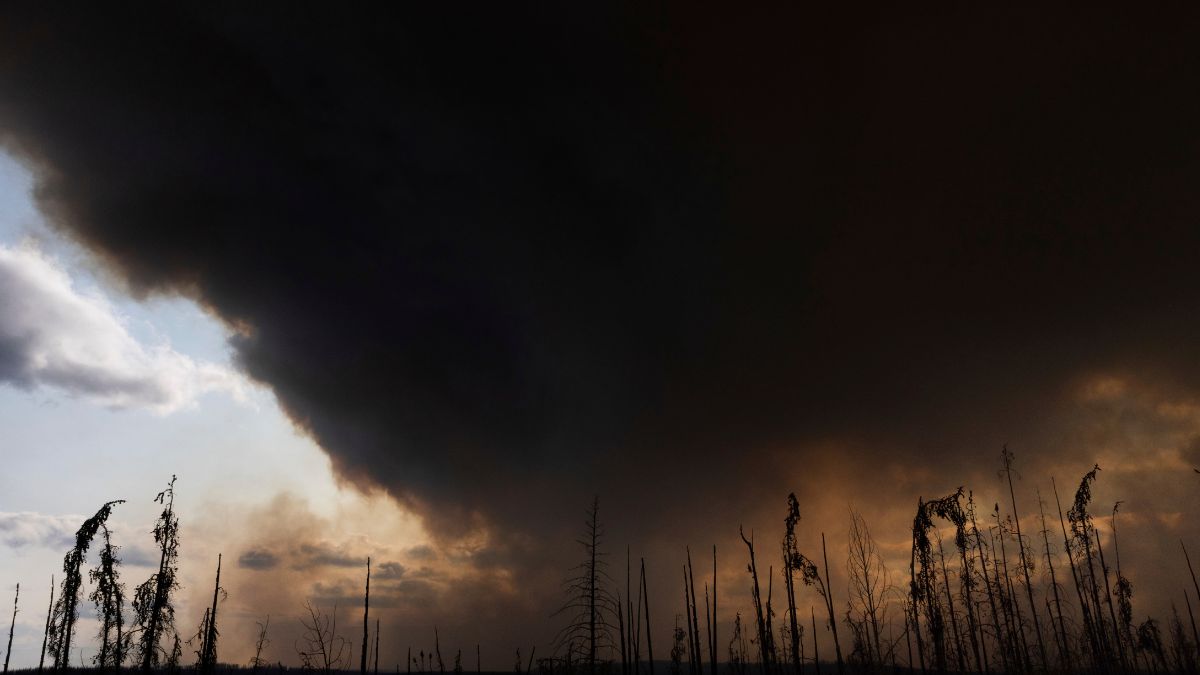Smoke from wildfires in Canada caused another day of poor air quality across parts of the US Midwest on Tuesday, especially in Minnesota, Wisconsin, and Michigan, where conditions were rated “very unhealthy.”
Over 27,000 people in Canada have been forced to evacuate, and the smoke has even reached Europe. In the Minneapolis-St Paul area, the smell of smoke lingered despite some rain. The Minnesota Pollution Control Agency issued a warning for nearly the whole state, saying air quality would slowly improve by Wednesday.
The smoke also affected parts of Iowa, where officials advised people—especially those with heart or lung conditions, to avoid intense outdoor activity. The smoky air reached as far as Georgia in the southeast, the Dakotas in the west, and Michigan in the east.
The US Air Quality Index (AQI) showed unhealthy to very unhealthy levels in several areas, especially in eastern Minnesota and the Twin Cities. Some places briefly reached the “hazardous” maroon category, but conditions started to improve by midday.
Hospitals in Minneapolis reported a slight rise in patients with breathing problems linked to the smoke. Dr. Rachel Strykowski, a lung specialist, said wildfire smoke makes conditions like asthma and COPD worse. She advised people to stay indoors and wear N95 masks if going outside, as regular cloth masks don’t provide enough protection.
The Canadian fire situation Canada is having another bad wildfire season, and more than 27,000 people in three provinces have been forced to evacuate. Most of the smoke reaching the American Midwest has been coming from fires northwest of the provincial capital of Winnipeg in Manitoba.
Impact Shorts
More ShortsThe Canadian Press reported that Winnipeg hotels were opening up Monday to evacuees. More than 17,000 Manitoba residents have been displaced since last week, including 5,000 residents of the community of Flin Flon, nearly 400 miles (645 km) northwest of Winnipeg. In neighbouring Saskatchewan, 2,500 residents of the town of La Ronge were ordered to flee Monday, on top of more than 8,000 in the province who had been evacuated earlier.
In Saskatoon, where the premiers of Canada’s provinces and the country’s prime minister met Monday, Saskatchewan Premier Scott Moe said all of Canada has come together to help the Prairie provinces, The Canadian Press reported.
Two people were killed by a wildfire in mid-May in Lac du Bonnet, northeast of Winnipeg.
Canada’s worst-ever wildfire season was in 2023. It choked much of North America with dangerous smoke for months.
The smoke reaches Europe Canada’s wildfires are so large and intense that the smoke is even reaching Europe, where it is causing hazy skies but isn’t expected to affect surface-air quality, according to the European climate service Copernicus.
The first high-altitude plume reached Greece and the eastern Mediterranean just over two weeks ago, with a much larger plume crossing the Atlantic within the past week and more expected in the coming days, according to Copernicus.
“That’s really an indicator of how intense these fires are, that they can deliver smoke,” high enough that they can be carried so far on jet streams, said Mark Parrington, senior scientist at the service.
)